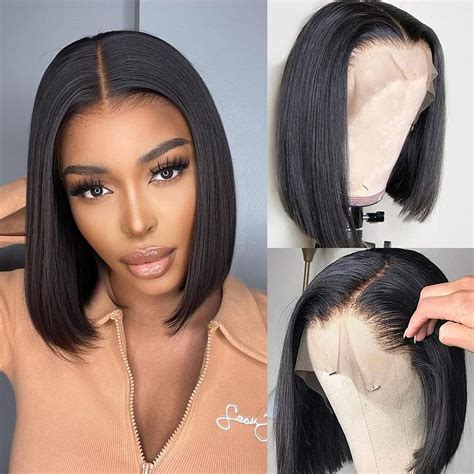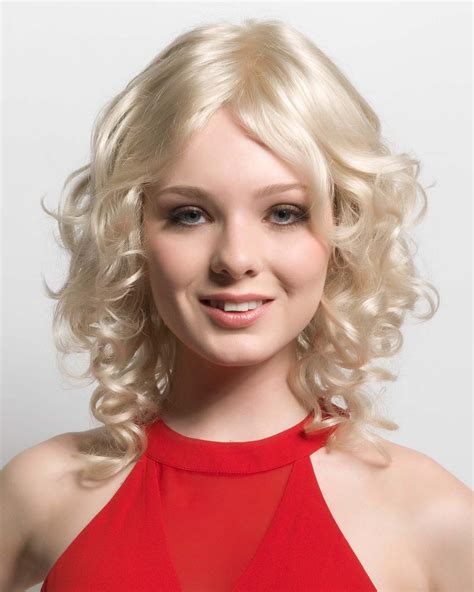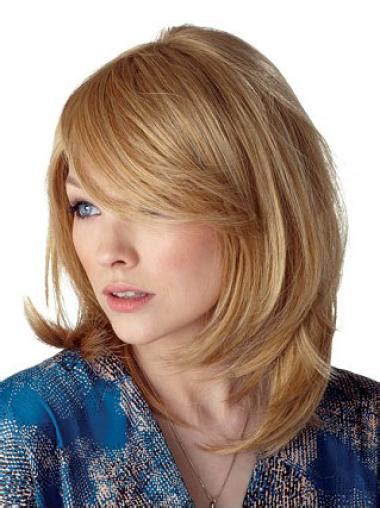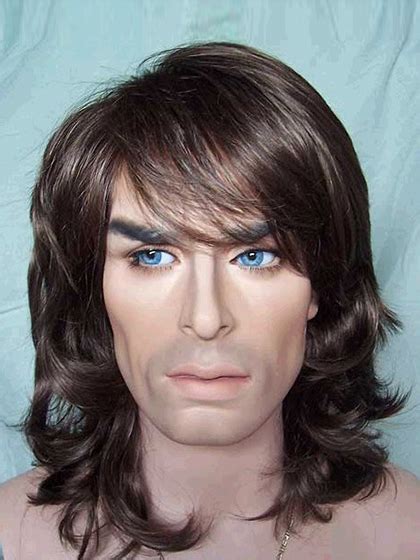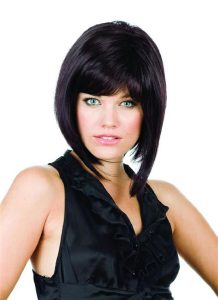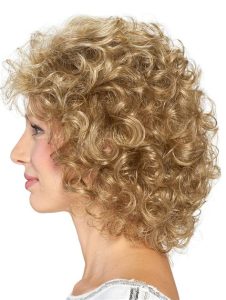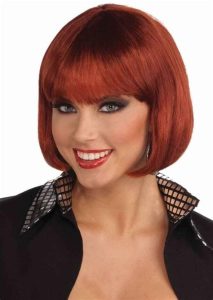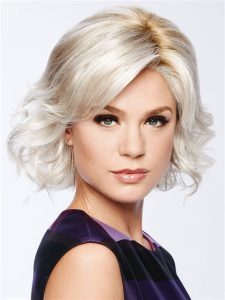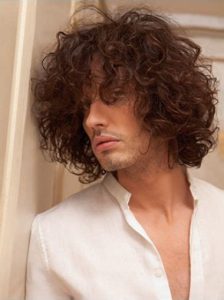2025: Auburn Synthetic VS Human Hair Wigs – Which Reigns Supreme?
Introduction
Lace front wigs have taken the internet by storm in recent years. For those who desire the allure of luscious locks without the commitment of chemical treatments or damaging heat styling, wigs have emerged as the savior. However, with a plethora of options available, navigating the world of wigs can be a daunting task.
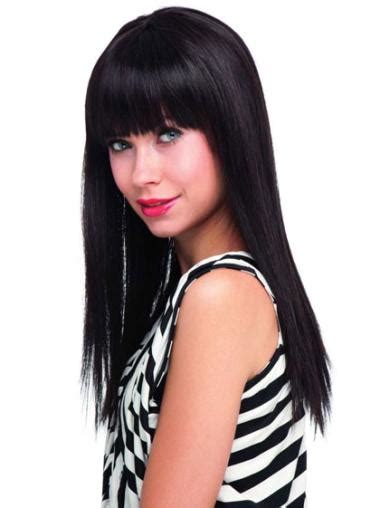
In this comprehensive guide, we will delve into the captivating world of lace front wigs, specifically focusing on auburn synthetic wigs and their timeless glamour. We will explore their advantages and disadvantages in comparison to their human hair counterparts, unravel the mysteries of lace construction, delve into the intricate world of cap designs, and provide expert tips on achieving a flawless wig installation.
The Allure of Auburn Synthetic Wigs
Auburn, with its mesmerizing blend of deep red and warm orange, has been captivating hearts for centuries. Its fiery yet earthy charm exudes warmth, passion, and a touch of intrigue. Synthetic wigs, crafted from high-quality synthetic fibers, offer a kaleidoscope of auburn hues, from fiery crimson to subtle auburn accents, ensuring that every woman can find her perfect match.
Synthetic VS Human Hair Wigs: Unraveling the Differences
Understanding the fundamental differences between synthetic and human hair wigs is crucial for informed decision-making. While both can elevate your look, each type possesses unique advantages and drawbacks:
1. Appearance and Texture
Synthetic wigs, meticulously crafted from synthetic fibers, mimic the natural look and feel of human hair with remarkable precision. Modern manufacturing techniques have enabled the creation of fibers that are soft, silky, and virtually indistinguishable from their human counterparts. However, human hair wigs retain an unmatched naturalness, offering an almost imperceptible blend with your own hair, particularly when sourced from high-quality donors.
2. Durability and Longevity
Synthetic wigs boast exceptional durability, resisting tangles, matting, and heat damage with remarkable resilience. They can withstand the rigors of daily wear and tear, making them a practical choice for those with active lifestyles or limited time for hair maintenance. Human hair wigs, while undeniably luxurious, require more delicate care to preserve their longevity. They are prone to damage from excessive heat styling, sun exposure, and vigorous brushing, necessitating proper handling and storage to extend their lifespan.
3. Heat Styling Versatility
Synthetic wigs excel in heat resistance, allowing for versatile styling options. You can use heat styling tools such as curling irons and flat irons to create an array of alluring hairstyles without damaging the fibers. However, human hair wigs offer unparalleled styling freedom, permitting you to achieve a broader spectrum of looks, from sleek and straight to voluminous curls. You can embrace the versatility of human hair wigs with confidence, knowing that they will withstand the heat of styling tools without compromising their integrity.
4. Maintenance and Upkeep
Synthetic wigs require minimal maintenance, making them a low-maintenance hair solution. They can be easily washed and styled at home using synthetic-friendly products, saving you time and money on professional salon visits. Human hair wigs, on the other hand, demand more meticulous care. They require regular washing, conditioning, and deep conditioning to maintain their luster and prevent damage. Professional salon treatments may also be necessary to preserve their health and longevity.
Exploring Lace Construction and Cap Designs
Lace wigs are renowned for their natural-looking hairline and seamless integration with your own hair. They are meticulouslycrafted with a delicate lace base that mimics the appearance of your scalp, creating the illusion of natural hair growth. Here, we’ll explore the two primary lace construction methods:
1. Swiss Lace
Swiss lace, renowned for its exceptional quality, is crafted from fine, virtually invisible strands that blend seamlessly with your skin tone. It is the preferred choice for creating the most undetectable hairline, making it ideal for those seeking a natural and flawless look.
2. French Lace
French lace possesses a slightly thicker construction compared to Swiss lace, offering greater durability and opacity. It is often used in combination with Swiss lace to create a more robust yet natural-looking hairline. French lace is particularly suitable for those with darker skin tones, as it provides better coverage and conceals the lace more effectively.
In addition to lace construction, cap design also plays a vital role in ensuring a comfortable and secure fit. Here are the most commonly used cap designs:
1. Full Lace Cap
A full lace cap provides the most versatility and customization options, as it allows for styling in any direction. It is crafted entirely from lace, offering a natural-looking hairline and a comfortable fit that conforms to the shape of your head.
2. Lace Front Cap
Alace front cap features a lace panel at the front of the wig, providing a natural-looking hairline. The rest of the cap is typically made of a breathable material such as mesh, ensuring comfort and ventilation.
3. 360 Lace Cap
A360 lace cap offers a combination of the full lace and lace front cap designs. It features a lace panel that extends around the entire perimeter of the wig, creating a natural-looking hairline and allowing for versatile styling options.
Achieving a Flawless Lace Wig Installation: Step-by-Step
Installing a lace wig flawlessly is an art form that requires precision and attention to detail. Follow these steps to achieve a natural and secure fit:
1. Prepare Your Hair
Braid or cornrow your natural hair tightly against your head to create a smooth base for the wig. Secure the braids with bobby pins to prevent them from showing through the wig.
2. Apply Adhesive
Apply a thin layer of lace wig adhesive to the lace around the perimeter of the wig. Use a brush or sponge applicator to ensure even distribution. Allow the adhesive to become tacky before applying the wig.
3. Position the Wig
Carefully place the wig on your head, aligning the hairline with your natural hairline. Gently press down on the lace around the perimeter to secure it.
4. Blend the Lace
Use a lace tint or foundation to blend the lace with your skin tone. Apply the product to the lace around the hairline and blend it outward using a brush or sponge.
5. Style and Secure
Style the wig to your liking using heat styling tools if desired. Use hairspray or mousse to secure the style and keep the flyaways at bay.
Reviews and Testimonials
“I couldn’t believe how natural my auburn synthetic bob wig looked! It blended perfectly with my skin tone and hair color, and the lace was virtually undetectable. The synthetic fibers were incredibly soft and styled beautifully.” – Sarah, satisfied customer
“I’ve tried both synthetic and human hair wigs, and I prefer synthetic. They’re so much easier to maintain, and they last longer. My auburn shoulder-length bob wig has been a lifesaver, especially during the summer months.” – Jennifer, repeat customer
Highlights and Standouts
1. Color Versatility
Auburn synthetic wigs offer a wide range of auburn hues, from fiery crimson to subtle auburn accents, ensuring that every woman can find her perfect match.
2. Heat Styling Versatility
Synthetic wigs can withstand heat styling, allowing you to create an array of alluring hairstyles without damaging the fibers.
3. Durability and Longevity
Synthetic wigs boast exceptional durability, resisting tangles, matting, and heat damage with remarkable resilience.
4. Low Maintenance
Synthetic wigs require minimal maintenance, making them a low-maintenance hair solution. They can be easily washed and styled at home using synthetic-friendly products.
Current Status and What We Can Do
The global market for auburn synthetic wigs is projected to reach $2.5 billion by 2025, driven by rising demand for affordable, low-maintenance, and stylish hair solutions. To stay ahead of the curve, manufacturers are continuously innovating, developing new synthetic fibers that mimic the look and feel of human hair with remarkable precision.
As consumers, we can support sustainable practices by opting for synthetic wigs made from eco-friendly materials. We can also extend the lifespan of our wigs by following proper care and maintenance guidelines.
Tables and Statistics
| | |
| ———————————————————————————————————————————————————————————————————————————————————————————————————————————————————————————————————————————————————————————————————————————————————————————————————————————————————————————————————————————————————————————————————————————————————————————————————————————————————————————————————————————————————————————————————————————————————————————————————————————————————————————————————————————————————————————————————————————————————————————————————————————————————————————————————————————————————————————————————————————————————————————————————————————————————————————————————————————————————————————————————————————————————————————————————————————————————————————————————————————————————————————————————————————————————————————————————————————————————————————————————————————————————————————————————————————————————————————————————————————————————————————————————————————————————————————————————————————————————————————————————————————————————————————————————————————————————————————————————————————————————————————————————————————————————————————————————————————————————————————————————————————————————————————————————————————————————————————————————————————————————————————————————————————————————————————————————————————————————————————————————————————————————————————————————————————————————————————
